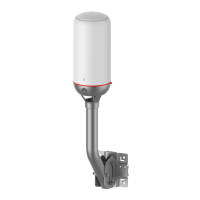
 Loading...
Loading...
Do you have a question about the Huawei B2368 and is the answer not in the manual?
| Category | Network Router |
|---|---|
| Maximum Download Speed | 600 Mbps |
| Maximum Upload Speed | 100 Mbps |
| Wi-Fi Standard | 802.11a/b/g/n/ac |
| Antenna Type | External |
| Operating Temperature | -40°C to +55°C |
| 3G UMTS Frequency Bands | B1/B8 |
| MIMO | 4x4 MIMO |
| Wi-Fi Frequency | 2.4 GHz |
| 4G LTE Frequency Bands | B1/B3/B7/B8/B20/B38 |
| Wi-Fi Speed | 300 Mbps |
| Interfaces | RJ45 |
Details the physical components of the LTE Device.
Explains how to view device interface and system information.
Discusses configuring broadband settings and SIM card options.
Covers locking bands, frequencies, or cell towers for LTE connection.
Explains how to specify the PIN for the SIM card.
Covers enabling WLAN, SSID, and security mode settings.
Details configuring LAN IP, subnet mask, and DNS server.
Describes viewing and configuring IPv4 static routes.
Details forwarding incoming service requests to servers.
Explains setting the IP address for the network DMZ.
Explains how to enable or disable the LTE Device's firewall.
Details allowing or denying access based on MAC addresses.
Describes enabling parental control and viewing rules.
Explains configuring restricted access schedules and URL filtering.
Details viewing and managing L2TP VPN tunnels.
Covers creating or modifying L2TP VPN tunnel configurations.
Explains viewing and managing GRE VPN tunnels.
Details creating or modifying GRE VPN tunnel configurations.
Explains configuring SIP server info and QoS for VoIP.
Details viewing system logs by category and severity.
Explains viewing phone logs and alert messages.
Details viewing call records for VoIP.
Explains viewing WAN traffic statistics.
Details viewing LAN traffic statistics.
Covers viewing NAT status of clients.
Explains viewing VoIP status.
Details configuring system passwords.